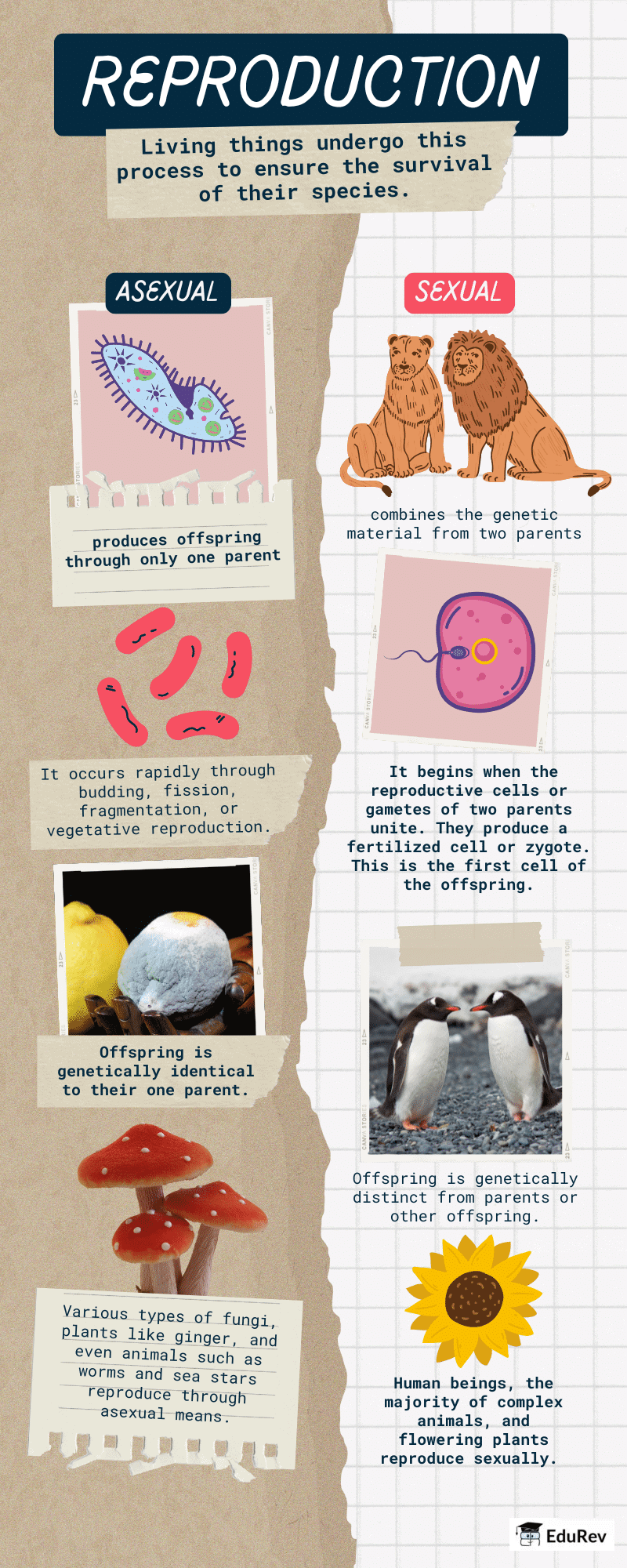Class 10 Exam > Class 10 Notes > Science Class 10 > Infographics: Reproduction
Infographics: Reproduction | Science Class 10 PDF Download

The document Infographics: Reproduction | Science Class 10 is a part of the Class 10 Course Science Class 10.
All you need of Class 10 at this link: Class 10
|
80 videos|569 docs|80 tests
|
FAQs on Infographics: Reproduction - Science Class 10
| 1. What is reproduction and why is it important for living organisms? |  |
Ans. Reproduction is the biological process by which new individual organisms are produced from their parents. It is essential for the continuation of a species, allowing for genetic diversity, population growth, and the survival of a species across generations.
| 2. What are the main types of reproduction? |  |
Ans. The two main types of reproduction are asexual and sexual reproduction. Asexual reproduction involves a single organism producing offspring that are genetically identical to itself, while sexual reproduction involves the combination of genetic material from two parents, resulting in genetically diverse offspring.
| 3. How does asexual reproduction occur in different organisms? |  |
Ans. Asexual reproduction can occur through various methods, such as binary fission in bacteria, budding in yeast and some plants, and vegetative propagation in plants. Each method allows organisms to reproduce without the need for a mate, enabling rapid population increase under favorable conditions.
| 4. What is the role of gametes in sexual reproduction? |  |
Ans. Gametes are specialized reproductive cells (sperm in males and eggs in females) that carry half of the genetic material needed to form a new organism. During fertilization, a sperm and an egg combine to create a zygote, which develops into a new individual with a unique genetic makeup.
| 5. How do environmental factors influence reproduction? |  |
Ans. Environmental factors such as temperature, availability of food, and presence of mates can significantly influence reproductive strategies and success. For example, some species may reproduce only during specific seasons when conditions are ideal for offspring survival, while others may adjust their reproductive timing based on environmental cues.
Related Searches





















